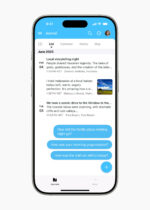For a while, mobile devices were expanding to become more like desktop computers. They gained real Web browsers, full-featured e-mail clients, installable applications, and oodles of functionality. The pendulum has swung back, and now desktops/notebooks are constricting to become more like mobile devices. This is not good news.
The most common examples, of course, are the Windows Phone-inspired Metro user experience for the forthcoming Windows 8, and the App Store and Launchpad in Mac OS X 10.7 Lion.
The next version of Apple’s desktop/notebook operating system, OS X 10.8 Mountain Lion (the “Mac” part of the name is being dropped), takes the metaphor a step further with a security feature called Gatekeeper. In its initial incarnation, at least, Gatekeeper will be optional. But what about OS X 10.9, I wonder?
Let’s back up a step. Unless you jailbreak your iPhone or iPad, you may only install apps that have been vetted by Apple and which are carried in its App Store. The only exception is that developers can—after juggling certificates—install their own test software on their own devices.
End users accepted that smartphones are walled gardens. You buy it, but the device is controlled by the hardware manufacturer, operating system maker, and carrier. By contrast, desktops/notebooks are generally 100% yours. You can do anything to them you want: swap operating systems, modify the internals, and install any software your little heart desires.
With Gatekeeper on OS X 10.8, says Apple, “The safest place to find apps for your Mac is the Mac App Store. That’s because the developers who create them are known to Apple, and the apps are carefully reviewed before they’re accepted in the store. If there’s ever a problem with an app, Apple removes it.”
Yup. Apple can uninstall applications from your Mountain Lion-based system.
In this version of the platform, you are given three choices about installing downloaded applications: To tell your system to only install apps from the Mac App Store; to let software come from the Mac App Store or from developers that Apple has approved; or from anywhere.
There are no guarantees that the third option will remain in future versions of the platform.
Now, this isn’t only about Apple, and in fact I wouldn’t be surprised to find similar functionality appear in Windows 8 or its immediate successor. But even so, Microsoft is looking to restrict the bootloader on forthcoming ARM-based Windows notebooks to block users from installing other operating systems. As Ars Technica reports, “All Windows 8 systems that meet Microsoft’s certification requirements must use UEFI firmware with Secure Boot enabled.”
Android, iOS and Windows Phone smartphones are walled gardens controlled by vendors. The MacBook Air and Windows 8 notebook are going the same way.
Alan Zeichick is editorial director of SD Times. Read his blog at ztrek.blogspot.com.






